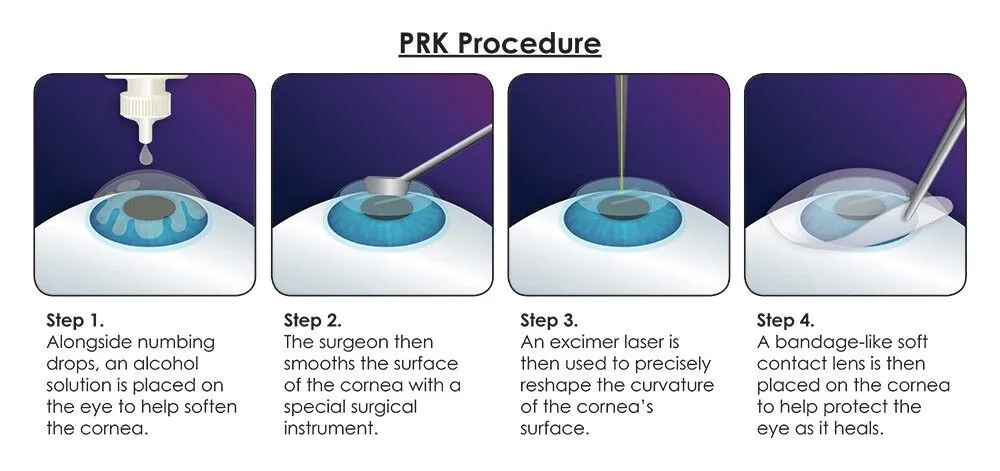PRK (photorefractive keratectomy) is another type of laser vision correction surgery, similar to LASIK, but with some key differences in the procedure and recovery process. Here’s a breakdown:
How PRK works:
- Epithelial removal: Unlike LASIK, PRK doesn’t create a corneal flap. Instead, the surgeon gently removes the entire outermost layer of the cornea (epithelium) using a brush or alcohol solution.
- Laser ablation: Similar to LASIK, an excimer laser ablates (removes) a precise amount of corneal tissue to reshape the cornea and correct refractive errors.
- Epithelial regeneration: After laser ablation, the removed epithelium naturally grows back within a few days, covering the reshaped cornea.

Key differences from LASIK:
- No corneal flap: This makes the procedure simpler but can lead to slower initial healing and potentially more discomfort compared to LASIK.
- Epithelial regeneration: The healing process involves regrowth of the corneal epithelium, which can take a few days and affect initial vision clarity.
- Possible haze: In some cases, PRK can cause temporary corneal haze, which can temporarily blur vision and require additional treatments.
Benefits of PRK:
- Suitable for thin corneas: Unlike LASIK, PRK doesn’t remove any corneal tissue for the flap creation, making it a good option for individuals with thinner corneas who may not be eligible for LASIK.
- Potentially lower risk of flap-related complications: Since no flap is created, there’s no risk of complications related to flap displacement or imperfections.
- Long-lasting results: Similar to LASIK, PRK offers long-lasting improved vision for many people.
Things to consider before PRK:
- Recovery time: Compared to LASIK, PRK has a slower initial recovery period due to epithelial regeneration, with discomfort typically lasting a few days and vision gradually improving over a week or two.
- Initial haze: The possibility of temporary corneal haze should be discussed with your doctor.
- Cost: PRK can be slightly less expensive than LASIK, but costs can vary depending on factors like your location and surgeon’s experience.
Overall, PRK is a safe and effective laser vision correction option, particularly for individuals with thin corneas. It’s important to discuss your individual situation and preferences with Dr. Hossam Elbarbary to determine if PRK is the right choice for you.
I hope this information helps you understand PRK and compare it to LASIK. Feel free to ask if you have any further questions!
